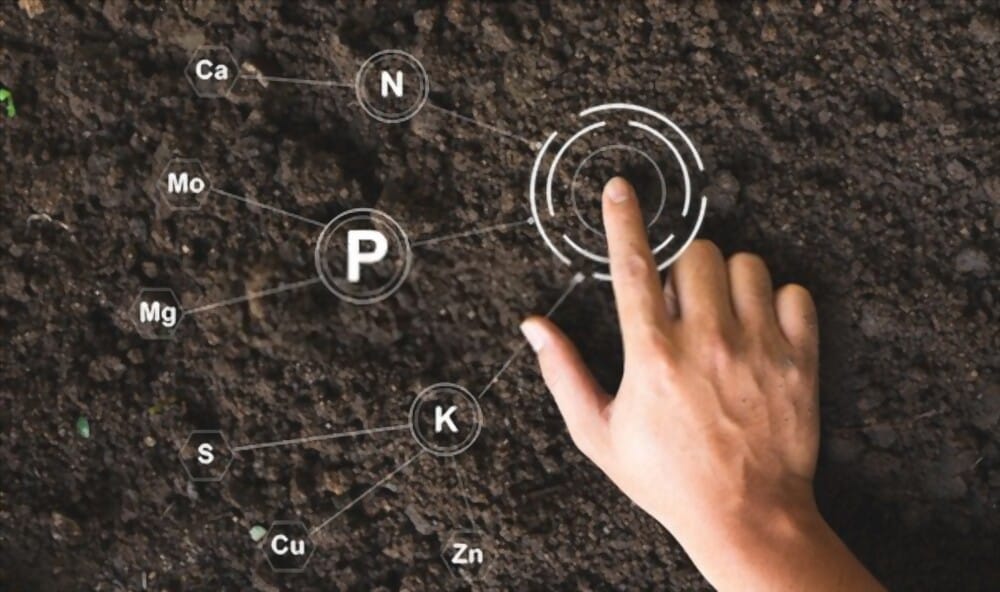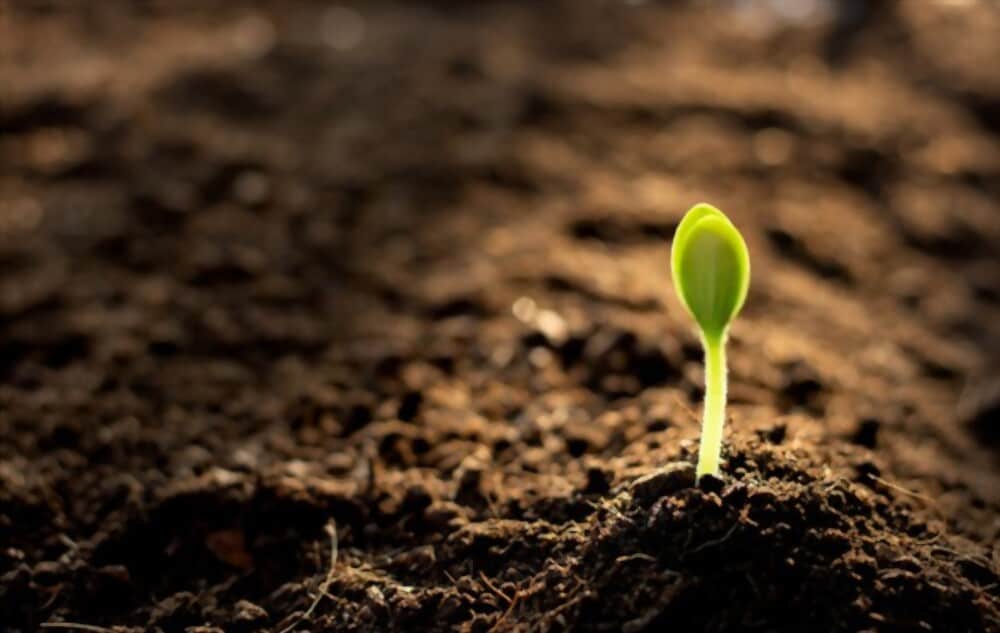
Fertilizer can be added to soil to boost its fertility, and applying fertilizer on the top of the soil has certain benefits as well.
Two types of fertilizers are available for usage in soil:
- natural fertilizers
- artificial fertilizers.
To immediately supply plants with nutrients, fertilizer can be mixed 2 to 3 inches into the soil. By incorporating nutrients into the soil, you can reduce the risk of rain or sunlight washing them away. When incorporated into the soil, organic fertilizers are preferable to inorganic ones because they can avoid root burn.
Organic fertilizer releases nutrients more gradually into the soil, reducing both root burns from immediate contact and loss from leaching.
We will examine the efficacy of adding fertilizer to the soil to increase soil fertility as well as the benefits and drawbacks of doing so.
Table of Contents
The Benefits of Mixing Fertilizers in Soil
The benefits of incorporating fertilizer into the soil are as follows.
1. Because nutrients in the soil are accessed sooner, crop yields are increased.
2. It promotes faster crop growth, particularly when hybrid seeds are employed.
3. It adds crucial microorganisms to the soil, instantly improves the texture of the soil, and recycles nitrogen.
4. It aids in supplying a certain nutrient that the soil may be deficient in.
5. Direct nutrient absorption by the crops from the soil will be simpler.
If this technique were used on potted plants, raised rows, or flat rows, the outcomes would be the same.
I have found that Miracle-Gro Soluble fertilizer produces the finest results. It offers excellent value for the money and is durable. Clicking here will take you there.
Disadvantages of Mixing Fertilizers in Soil
As we have shown previously, applying fertilizers has advantages. However, incorporating fertilizers into the soil has drawbacks as well. The drawbacks are listed below.
1. Fertilizers encourage faster crop growth while simultaneously giving weed growth a boost. As a result, the expense of weeding the garden may increase.
2. The soil structure may not get better when fertilizers, especially synthetic ones, are added.
3. Excessive fertilizer application depletes the soil’s fertility and damages roots by burning them.
4. Using fertilizers for an extended length of time might lower microbial activity and alter the pH of the soil.
5. Leaching results in eutrophication as it flows into the neighboring rivers.
| Advantages | Disadvantages |
| increases the fertilizer’s effectiveness | If mixed too thoroughly, young plants might not be able to utilize the nutrients it offers. |
| encourages more rapid plant growth | increases the likelihood of nitrogen leaking into waterways |
| decreases the weeds’ access to fertilizer | takes more time and work to fully incorporate the fertilizer into the soil. |
| encourages nitrification of ammonium compounds quickly | commonly needs extra fertilizer |
| During accelerated soil erosion, keep nutrients in tact. | |
| less fertilizer is needed per acre. | |
| lessens the fertilizer-nullifying effects of sunlight. |
How do you Add Fertilizers to the Soil?
There are four methods you can use to add fertilizer to your soil;
1. Broadcasting before planting
By using this technique, you can equally distribute the fertilizer particles throughout the garden soil and thoroughly mix it before beginning to create the rows. The plants are less likely to suffer from this technique, making it the best for indoor gardening.
2. Side dressing –
This kind of fertilizer application exists. The fertilizer is sprinkled along the margins of the plant rows and is primarily utilized in sandy soil.
3. Banding –
Before you begin planting, apply the fertilizer in this case in a strip 2 inches deeper and 2 inches to the side of the row.
4. Liquid application
This is the application of liquid fertilizer. It is applied via spray cans, sprinklers, or irrigation in furrows.
When the leaves exhibit signs of nutrient inadequacies, this kind of fertilizer is sprayed on them.
However, you should exercise caution when spreading because a powerful solution could burn the plant’s leaves.
If you are growing plants in containers, bottom watering is a more effective approach to provide fertilizers.
Will Mixing Fertilizer in Soil Make Plants Grow Faster?

By incorporating fertilizer into the soil, plants are able to absorb minerals like potassium, nitrogen, and phosphorus more quickly, which accelerates plant growth.
The macronutrients (NPK) and their advantages are listed below:
Nitrogen (N) –
Additionally, nitrogen aids in the production of a plant’s fruit, flowers, and stems. Additionally, it improves the look of the leaves and accelerates its growth in general.
Phosphorus (P) –
The roots benefit from phosphorus. It facilitates the synthesis of organic substances like starches and oils that are essential for the development of the roots system.
Additionally, phosphorus contributes to the creation of chlorophyll, a green pigment that absorbs light to give energy for photosynthesis.
Potassium (K) –
Potassium aids in the creation of proteins, the defense against disease, and the process of photosynthesis.
Because of all the aforementioned factors, fertilizer accelerates a plant’s pace of growth.
Even without fertilizer, plants can still thrive and flourish. However, compared to when they were planted without fertilizer, they usually grow more quickly when fertilizer is applied.
Can Sunlight Affect Fertilizer?
Sunlight can alter applied fertilizer. As a result, it is advised that you apply fertilizer when it is cool outside, with little sunlight and little wind.
By incorporating fertilizer into the soil, you can shield it from direct sunshine. This drastically lessened the fertilizer’s ability to be neutralized by sunshine.
As a result, the fertilizer might be more potent when supplying nutrients to the soil.
It is suggested to apply fertilizer in the early morning or late evening.
Applying fertilizer at night requires using fertigation, which enables you to inject the fertilizer into the moving water to reach the roots without wetting the leaves.
This technique makes sure that the leaves are not dampened overnight, and the plant receives the required fertilizer for healthy growth.
Types of Fertilizer you can mix into Soil
Organic Fertilizer
Organic fertilizers are wonderful for mixing into the soil; they usually contain manure, peat, guano, slurry, worm casting, and seaweed.
These are also referred to as organic natural fertilizers.
Contrarily, there are synthetic organic fertilizers, compost, bone meal, blood meal, and seaweed extracts.
These are all organic fertilizers that can be added to the soil prior to planting.
In order to add an organic source of slow-release fertilizer to the soil, you may also mix old mulch or dead leaves into it.
Inorganic Fertilizer
A balanced inorganic fertilizer can contain ammonium sulfate, magnesium sulfate, and potassium chloride and is high in all three macronutrients. The majority of the minerals in inorganic fertilizer are mined from the earth.
Several Illustrations of Inorganic Fertilizers
- Amphetamine Nitrate
- Sulfate of Ammonium
- Chloride of Potassium
- Superphosphate three
I would suggest Osmocote Smart-Release Plant Food if you’re looking for a fertilizer that will make sure your plant grows healthily for a long period of time with no involvement. Clicking here will take you there.
Both top-dressing the soil with slow-release fertilizer and incorporating it into the soil are options.
The disadvantage of applying fertilizer on top of the soil is that when it rains or the plant is watered, the water quickly washes off the coating, releasing the fertilizer into the soil and shortening the fertilizer’s shelf life.
However, the soil functions as a barrier against rapid water washing from watering or rain if the slow-release fertilizer is incorporated into the soil. As a result, the fertilizer stays active in the soil for a longer duration.
As a result, the nutrients release gradually, as they should.
The advantages of using organic fertilizer
- Slow-acting organic fertilizers. The soil needs some time to decompose the fertilizer. The plants benefit from this. As the fertilizer gradually releases its nutrients to the soil, they will progressively receive fertilizer over time.
- They are simple to use.
- They are less harmful to you, your plants, and any other soil microbes than any other kind of fertilizer.
- They increase the soil’s ability to retain water. Organic compounds enhance soil texture, which prolongs moisture retention.
